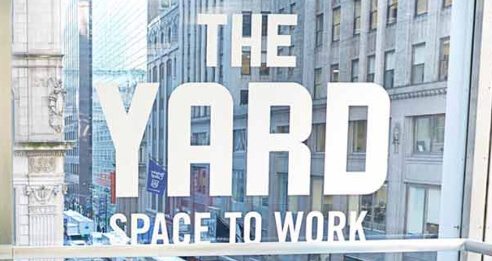
Largest Coworking Companies


This is the second installment of ‘Starting A Coworking Business’—we have four in total! Click here for parts one, three, and four.
When thinking of coworking space features, the sky may be your only limit in the creative sense, with one caveat: never forget the community as its lifeblood and main driving force behind it. Your customers are going to be the alpha and omega of any coworking business model you can think of, while everything in between rests solely on your creativity.
Still, if you are to reap the best rewards out of running a space of this type, try to think of its design as a means to promote customer interaction and streamline the flow of creative juices between them. This means that, while important, aesthetic considerations should not have primacy over ensuring the movement and easy accessibility across the entire facility. You do not want your customers to feel either crammed in a crowded space or isolated – balance is the name of the game here.
Once you ensure easy movement and equally unobstructed flow of ideas, you can work on establishing the unique visual identity of your workspace. You’d be surprised to learn how a strategically placed picture or a plant can change the perception of the workspace not just as a “place for work”, but as a location one enjoys spending time in. When envisioning this segment, do not forget to promote the culture of decorating one’s own working space by the customers themselves.
![[2/4] Coworking Space Ideas](https://res.cloudinary.com/kisi-kloud/image/upload/c_lfill,dpr_auto,f_auto,q_auto:good,w_1880/v1/collections/cwr/blog/2-4-coworking-space-ideas/ideas-for-your-space-5b3a75a4762257f416ecbe2c)
Coworking spaces offer a more affordable pricing model for many customers because sharing of services and optimized usage of available space are generally more desirable financial alternatives than buying or renting “proper” office space. Yet, making sure your offering forms a dynamic duo with its price point is not an easy task, because you want to cater both to digital nomads and high-end clients, right? Yet, while the margins can be low in this business, there are smart ways to hit the pricing sweet spot here.
Finding the right pricing model means making your membership plans offer as many options as possible to provide for all client profiles. You’ll have to take into consideration the average prices in your immediate surroundings as well as your competitors’ offerings. These plans can be fixed, based on the time interval (weekly, daily, annual) or flexible. Each of these models should be studied for its profitability while accounting for potential season-based variations (holidays, summertime etc.). Whatever pricing model you decide on, the membership plans need to account for at least for two broad groups: pricing for startups, nomads and freelancers as one group, and the one for corporate entities and companies as the other.
You may think that freelancers and nomads are the meat & potato of your customer pool, but they are usually choosing your coworking space as an option that will not ultimately rob them of their hard-earned money. Still, offering access to high-quality services can help you attract and retain high-paying customers just as well.
Tech companies are always on the lookout for so-called satellite offices that can provide semi-permanent accommodation for their product team members. To make good use of this, you need to expand your offer with additional services such as the provision of sleeping accommodation, tours of the city and stuff such as access to the spa, massage parlors, high-end restaurants which are either located in your coworking space or its vicinity.
![[2/4] Coworking Space Ideas](https://res.cloudinary.com/kisi-kloud/image/upload/c_lfill,dpr_auto,f_auto,q_auto:good,w_1880/v1/collections/cwr/blog/2-4-coworking-space-ideas/ideas-for-your-space-5b3a7595d369302a6da1ef84)
Everybody loves free stuff, and you can freely include options such as free fitness classes or unlimited color printing as a means to stand out among your direct competitors. While offering the lowest desk rates and the fastest Wi-Fi may help you stand tall in your area, you’ll have to follow up on this strategy with other differentiation points to maintain your advantage in the long run.
One of the ways to achieve this is to go beyond the general expectation that your workspace is used for, well, only work. Hosting community-based events will get you ahead of the competition if you approach them in a smart way. You can organize movie nights or offer cheap beers on particular days, helping you reach out to the audience which is not the focus of your immediate customer targeting efforts. You might as well organize trips and excursions (such as hiking) in order to have your members get to know each other better in a less formal manner.
Not all of these activities have to be fun & games. Provided that you build quality rapport with your community members, you can have them organize free panels, courses or workshops in their fields of expertise in exchange for mutually beneficial promotion.
Save your community manager 41 hours each week—learn how The Yard did it with cloud-based access control.
Read the Case StudyThe Guide to Make Your Space More Profitable
Including interviews with experts and consultants.
Free access to our best guides, industry insights and more.
